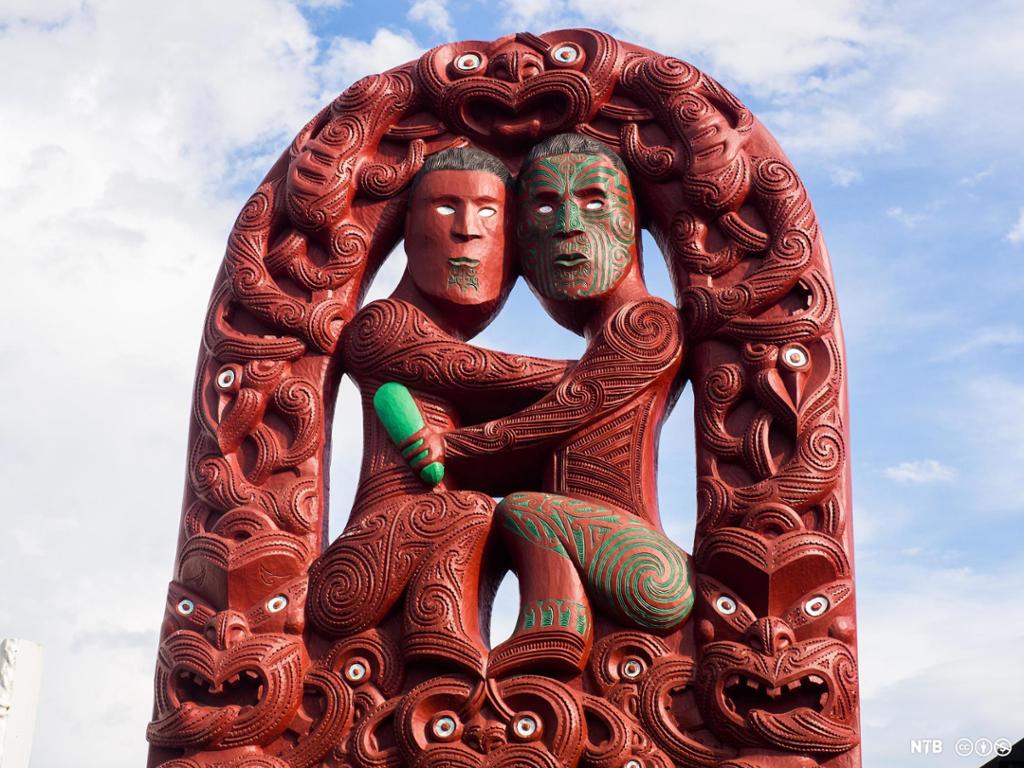The Oppression of Indigenous Peoples in the United States, Canada, Australia, and New Zealand

It is believed that the Native Americans came to America from Eurasia around 30,000 years ago, and that they arrived across a land-bridge that connected Siberia to Alaska.
When the first European settlers came to North America it is estimated that around ten million Native Americans already lived there. They lived across the continent, from the Arctic to the Southwest. The Native Americans lived in tribes that had adapted to the areas where they lived and had very different cultures and ways of life. Some lived in cities, while others were nomadic hunter-gatherers. Some were peaceful, others were warriors.
European settlement gradually occupied more and more Native American land, and desperate wars broke out, but the Native Americans lacked the technology and numbers to effectively fight the newcomers. In addition to this, many Native Americans died as a result of the diseases that the Europeans brought with them. Years of oppression followed.
In 1924, the Native Americans were given US citizenship, as recognition of the efforts of Native American soldiers during World War I. It was not until the 1960s that Native Americans had the right to vote in all US states.
Aboriginals and Torres Strait Islanders are the indigenous peoples of Australia. These peoples are considered to be the oldest peoples in the world. Before the Europeans settled, they lived in small communities of hunter-gatherers. In 1770, Captain James Cook claimed possession of the whole east coast of Australia for the British Crown.
When more and more Europeans came and took over their land, groups of Indigenous Australians tried to fight back. Guerrilla-style attacks continued through to 1816.
From the mid-1800s, government policy was introduced that took indigenous children from their families in order to raise them away from their heritage and culture. This practice did not end until the 1970s. These children are known as the Stolen Generations or the Stolen Children. This is just one example of oppressive tactics employed against the indigenous peoples of Australia. In 1967, the indigenous peoples were granted citizenship in Australia.
The Māori are the indigenous people of New Zealand. Aotearoa is the Māori name for New Zealand. The two names are used on a more or less equal footing within the country, but hus far, not internationally. The Māori came from East Polynesia and arrived in New Zealand in several waves from around 1320 to around 1350. Living in isolation in New Zealand, the Māori developed their own culture and language that was different from their Polynesian origin. Europeans first came to New Zealand in the mid-1600s. Their initial contact with the Māori varied from lethal encounters to peaceful trade. The Māori began to use many of the new weapons and technology that the Europeans brought with them.
The British first took an interest in New Zealand after Captain James Cook had visited in the late 1700s. In the Treaty of Waitangi (1840) the British recognized Māori ownership over their lands, forests and other possessions, and gave the Māori status as British subjects. The British went back on the Treaty of Waitangi in 1877, and the Māori were forced to assimilate into the culture of the settlers. Disease epidemics brought by the settlers took a great toll on the Māori population. Starting in the early 1900s, efforts were made to re-establish Māori rights in New Zealand.
Work in groups. Choose peoples from two different countries to study and compare.
Find out:
What was the peoples’ way of life like before European settlement?
What was it like when the Europeans first came?
Were wars fought between the Indigenous peoples and the Europeans?
Did the Europeans make attempts to ensure peaceful coexistence with the Indigenous peoples?
Did the peoples experience oppression or racism?
When were the peoples given equal rights in society?
What is the situation like for the peoples today? Are they treated equally in society? How do their living conditions compare to those of the majority of the population?
Compare the two peoples you have chosen and point out similarities and differences in how they were treated, and what their situation is like today.
In the expandable boxes you will find links to information that can help you get started. You may also find your own sources using the internet or the library.
Since 2005, Indigenous Arts and Stories have held competitions for indigenous artists and writers. The program is organized by Historica Canada. Visit the website and read two of the stories you find there. You can choose any two stories you would like to read, or read the two we have linked to.
Link to the website: Link to Indigenous Arts and Stories' website: writing
Short story suggestion 1: 'Frog Girl' by Trevor Jang.
Link to the short story Frog Girl by Trevor Jang
Short story suggestion 2: 'The Bridge' by Jillian Morgan.
Link to the short story 'The Bridge' by Jillian Morgan
Did the short stories teach you anything about what it is like to come from an indigenous background? If so, what did you learn?
When you have read the stories, you may also want to have a look at some winners of the art category of the competition. You can find those winners by following this link: